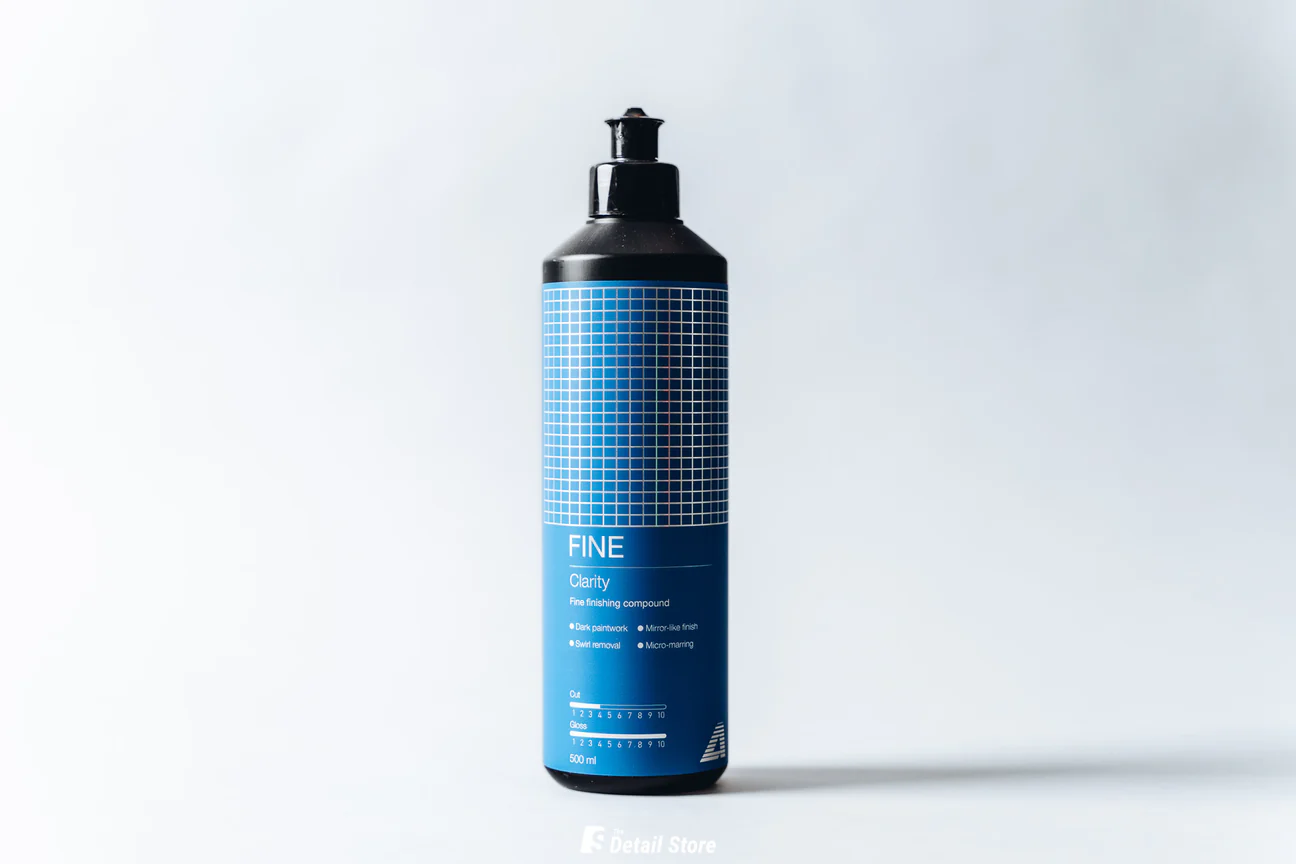Understanding the differences between compounds and polishes is crucial for achieving the best results in car detailing.
While both are used for paint correction, they serve different purposes and are applied in different situations.
This simple guide will help you understand the aggressive nature of compounds, the precision of polishes, and the benefits of hybrid solutions.
The Aggressive Nature of Compounds

What Are Compounds?
Compounds, often referred to as cutting compounds, are abrasive substances designed to remove surface imperfections from your car’s paint.
These imperfections can include light scratches, oxidation, and severe swirl marks.
Compounds work by “cutting back” the paint to level out the surface, making defects less visible.
When to Use Compounds
- Visible Light Scratches: Compounds are effective in removing visible light scratches quickly.
- Oxidation Removal: They are ideal for eliminating oxidation and other severe paint imperfections.
- Fast Correction: Compounds achieve correction at a significantly faster pace compared to polishes.
Drawbacks
- Risk to Clear Coat: Compounds are aggressive and can potentially go through the clear coat if not used carefully.
- Marring: Depending on the paint, compounds can leave light marring that needs to be addressed with a finer polish.
Product Recommendation: Apex Customs Clarity Coarse Cutting Compound
The Polishing Precision

What Are Polishes?
Polishes are less abrasive than compounds and are designed to refine the paint’s surface after using a compound. They help in enhancing the shine and gloss of the paint by smoothing out any minor imperfections left by the compound.
When to Use Polishes
- Post-Compounding: Polishes are typically used after compounding to refine the finish.
- Enhancing Shine: They bring out the shine and gloss due to their finer abrasive particles.
- Less Aggressive Correction: Polishes provide a less invasive way of correcting paint imperfections.
Drawbacks
- Slower Process: Polishes take longer to achieve the desired level of correction and finish.
- Limited Abrasion: They are not effective on deeper scratches or severe imperfections.
Product Recommendation: Apex Customs Clarity Fine Finishing Compound
The Hybrid Solution: One-Step Compounds

What Are One-Step Compounds?
One-step compounds, also known as diminishing abrasive compounds, combine the functions of both compounds and polishes. These products start with larger abrasive particles that break down into finer particles as you work them into the paint.
Benefits
- All-in-One Product: They offer a comprehensive solution by cutting and polishing in one step.
- Time-Saving: Reduces the need for multiple products and steps in the detailing process.
Drawbacks
- Incomplete Correction: The abrasives may break down before full correction is achieved on deeper scratches, necessitating multiple passes.
Product recommendation: Apex Customs Clarity Medium Polishing Compound
Choosing the Right Product for Your Needs
In general, here are some factors to consider when deciding between the two.
- Severity of Imperfections: Choose a compound for severe imperfections and a polish for minor imperfections.
- Desired Finish: Use a polish to achieve a high-gloss finish after compounding.
- Time and Effort: One-step compounds can save time but may require additional work for deep corrections.
Tips for Effective Use
- Test a Small Area First: Always test your chosen product on a small, inconspicuous area to ensure compatibility with your car’s paint.
- Follow Manufacturer Instructions: Adhere to the guidelines provided by the product manufacturer for optimal results.
- Use Appropriate Tools: Ensure you are using the correct pads and polishing tools for each product.
- Work in Sections: Divide the car into manageable sections and complete one section at a time.
Conclusion
By understanding the differences between compounds and polishes, as well as how to use them effectively, you can achieve exceptional results in your car detailing projects.
Regular maintenance and proper technique will ensure your car’s paint remains in top condition.
For more tips on perfecting your car’s paint, check out our comprehensive Paint Correction Guides.
Frequently Asked Questions (FAQs)
Yes, using a compound followed by a polish is a common practice for achieving a smooth, glossy finish.
Compounds should be used sparingly, only when necessary to remove significant imperfections. Frequent use can thin the clear coat.
One-step compounds can be effective but may require additional passes for deep imperfections. Separate products can offer more precise control over the correction process.
Use a cutting pad with compounds for effective abrasion. Polishing pads should be used with polishes to enhance the finish.
Use minimal pressure and work in a controlled manner. Follow up with a polish to remove any light marring caused by the compound.
Diminishing abrasives break down into finer particles as you work them, whereas non-diminishing abrasives maintain their size and cut throughout the process.
-

Calvin brings a wealth of experience across multiple engineering disciplines, including chemical, mechanical, and electrical engineering. His in-depth knowledge of filtration systems and hydraulic pumps has positioned him as an expert in the pressure washer product category. With a unique combination of technical expertise and business insight, Calvin excels at solving complex challenges and driving innovation, particularly in the car detailing industry.
-

Aaron is a passionate car detailing enthusiast who channels his expertise and love for pristine vehicles into engaging blog content for a leading detail store website. With a keen eye for detail and a wealth of knowledge about the latest products and techniques, Aaron provides invaluable insights and tips to fellow car enthusiasts. His dedication to achieving showroom-quality results and his ability to explain complex processes in an easy-to-understand manner make his blog a go-to resource for anyone looking to elevate their car detailing game.
